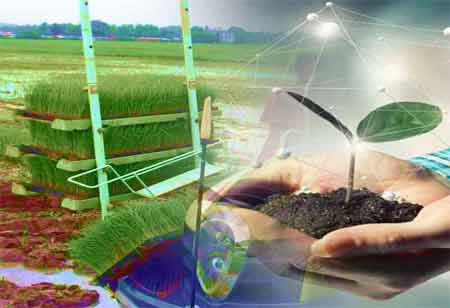Thank you for Subscribing to Agri Business Review Weekly Brief
Aquafarming Embraces the Circular Economy
Aquafarming, the controlled cultivation of aquatic animals for food, provides protein to an expanding global population.

By
Agri Business Review | Thursday, February 29, 2024
Stay ahead of the industry with exclusive feature stories on the top companies, expert insights and the latest news delivered straight to your inbox. Subscribe today.
Integrating a circular economy framework in aquafarming aligns with environmentally responsible practices and propels the industry towards a more sustainable and resilient future.
FREMONT, CA: Aquafarming, the controlled cultivation of aquatic animals for food, provides protein to an expanding global population. Nevertheless, conventional methods have encountered environmental issues such as waste accumulation and nutrient runoff. Fortunately, implementing a circular economy framework presents promising solutions to mitigate these challenges.
Embracing the Circular Approach in Aquafarming
Aquafarming is increasingly embracing circular principles through various strategies. One notable approach involves converting waste products into valuable resources. Uneaten fish feed, fish faeces, and organic waste can be repurposed as fertiliser or utilised in cultivating live food for other aquatic animals, such as insects or worms, forming a sustainable cycle within the aquaculture system. Another critical initiative involves nutrient capture through advanced filtration systems and integrated multi-trophic aquaculture (IMTA). This method enables the extraction of excess nutrients from fish waste, which can then be employed to cultivate plants or algae. These plants and algae contribute to the system's food supply and enhance water quality. Additionally, aquafarming leverages the by-products generated during fish processing, such as shells, bones, and trimmings. These by-products can be transformed into valuable commodities like bioplastics, fertilisers, cosmetics, and pharmaceuticals, further exemplifying the industry's commitment to circular and sustainable practices.
Efficient Waste Utilization Strategies in Aquaculture
The optimisation of waste utilisation in aquaculture demonstrates a commitment to sustainability and resource efficiency. Fish waste, comprising scraps and trimmings from processing, can be repurposed into high-protein animal feed, diminishing reliance on wild-caught fish and terrestrial protein sources. Additionally, uneaten feed from fish cages can be collected and employed to cultivate algae or filter-feeding organisms, creating supplementary food sources within the system. The organic sediment, known as aquaculture sludge, accumulating at the tank's bottom can be composted or utilised to cultivate insects like black soldier flies, subsequently serving as feed for fish or poultry.
In nutrient recycling, innovative systems such as aquaponics integrate aquaculture with hydroponics. The nutrient-rich wastewater from fish tanks serves as fertiliser for plants, while the plants reciprocally filter and purify the water for the fish. Recirculating Aquaculture Systems (RAS) exemplify another sustainable practice, treating and reusing water within the aquafarming system, thereby minimising water usage and averting nutrient pollution of surrounding water bodies.
Furthermore, certain by-products derived from aquaculture possess inherent value. Cultivated seaweed, for instance, proves versatile in applications such as food, biofuels, animal feed, and pharmaceuticals. Crustacean shells can be processed into chitin, a valuable biopolymer used in cosmetics and wound dressings. Similarly, fish scales can be converted into collagen, a critical component for diverse industries ranging from cosmetics to food production. These strategic approaches not only enhance the overall sustainability of aquaculture but also capitalise on the value inherent in by-products.
Implementing a circular economy approach in aquafarming yields multifaceted advantages. One pivotal benefit lies in the diminished environmental impact achieved through minimising waste and resource depletion, thereby fostering a more eco-friendly aquafarming system. Moreover, incorporating circular principles enhances operational efficiency by embracing waste and by-products, fostering a closed-loop system, curtailing dependence on external resources and mitigating associated costs. Furthermore, these practices contribute significantly to heightened food production sustainability, which is pivotal in mitigating the adverse impact on natural ecosystems.
Integrating aquafarming with the principles of a circular economy represents a promising avenue toward a more sustainable and practical approach to food production. Through the efficient utilisation of waste, nutrient recycling, and the exploration of alternative uses for by-products, aquafarming can align with circular economy principles, thereby reducing its environmental impact and enhancing its overall sustainability. As ongoing research and development efforts progress, coupled with the implementation of supportive policies, the incorporation of circular principles within aquafarming holds significant potential to meet the escalating protein demands while preserving our precious natural resources.





